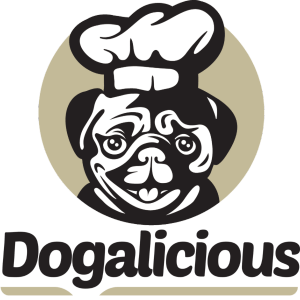Introduction
Most pet owners assume that commercial cat food—whether it’s kibble or canned wet food—is nutritionally complete. After all, they’re labeled “balanced” and “approved.” But when you dig deeper into what’s inside, you’ll discover a shocking truth: many commercial formulas are loaded with low-quality ingredients, artificial additives, and fillers that don’t align with a cat’s natural dietary needs.
Let’s explore the hidden risks in kibble and wet food, and why fresh cat food is a much safer, science-backed alternative.
1. Rendered Animal By-Products
Commercial pet food often uses “meat meal” or “by-product meal.” These are rendered parts of animals not suitable for human consumption—like beaks, feathers, or diseased tissue.¹ While legal in pet food, these ingredients are harder to digest and lack consistent nutritional value.
2. Carbohydrate Overload in Kibble
Cats are obligate carnivores, designed to thrive on protein and fat. Yet kibble can contain 30–50% carbohydrates—far higher than a cat’s natural diet.² Excess carbs lead to obesity, diabetes, and digestive issues.
3. Artificial Preservatives, Colors, and Flavors
Common additives like BHA, BHT, and ethoxyquin are used to extend shelf life.³ Some of these have been linked to cancer in lab animals. Artificial colors and flavors, while appealing to humans, serve no nutritional purpose and may cause allergies.
4. Wet Food Issues – BPA and Low Protein Quality
Canned foods may avoid some carb issues, but they come with their own risks. Many cans are lined with BPA, a chemical linked to hormone disruption.⁴ Furthermore, the protein quality in wet food is often low, with fillers and thickeners like carrageenan, which has been associated with inflammation.⁵
5. Nutrient Loss During Processing
Kibble and canned food are heavily processed at high temperatures, which degrade essential nutrients like taurine and vitamins.⁶ While nutrients are often “added back” through synthetic supplements, these are not as bioavailable as those from natural fresh sources.
6. Mycotoxins and Contamination Risks
Dry food is especially prone to contamination from mold and mycotoxins during storage. The FDA has recalled multiple pet food brands over aflatoxin contamination, which can cause liver failure in cats.⁷
Conclusion
Kibble and wet food may seem convenient, but their hidden risks are undeniable. From poor-quality proteins to artificial chemicals and nutrient loss, they fail to match a cat’s biological needs. Fresh cat food, on the other hand, is minimally processed, high in moisture, and made with human-grade ingredients—giving your cat the nutrition nature intended.
👉 At Dogalicious, we’re redefining cat food by crafting fresh, wholesome meals free from fillers and harmful additives.
大部分飼主以為市面上的貓糧(乾糧或罐頭)已經營養均衡,因為包裝上寫著「完整」或「認可」。但深入研究後會發現,許多商業配方充滿低質原料、人造添加劑與填充物,與貓咪的自然飲食需求大相逕庭。
以下將揭示乾糧與罐頭的隱藏危機,並解釋為何貓鮮食才是符合科學的最佳選擇。
H2:1. 副產品粉與低質肉類
許多貓糧使用「副產品粉」或「肉骨粉」,這些來自不適合人類食用的動物部位,例如羽毛、喙或病變組織。¹ 雖然合法,但營養價值不穩定,且難以消化。
H2:2. 乾糧中的高碳水化合物
貓咪是專性肉食動物,應以蛋白質與脂肪為主。但乾糧通常含有 30–50% 碳水化合物,² 遠高於貓咪的自然飲食。過量碳水會導致肥胖、糖尿病及腸胃問題。
H2:3. 人工防腐劑、色素與香料
BHA、BHT 和乙氧喹等化學物質常被用作延長保質期。³ 其中一些在實驗動物中與癌症相關。人工色素與香料雖吸引飼主,但對貓咪毫無營養價值,甚至引發過敏。
H2:4. 罐頭的問題 – BPA 與低質蛋白
罐頭食品雖然碳水較低,但存在 BPA 塗層風險,該化學物質與荷爾蒙失調有關。⁴ 同時,罐頭常添加增稠劑(如卡拉膠),可能引發炎症。⁵
H2:5. 高溫加工導致營養流失
乾糧和罐頭都經高溫製作,導致牛磺酸與維他命等關鍵營養素大量流失。⁶ 雖然廠商會再添加合成營養素,但其吸收率遠低於天然來源。
H2:6. 霉菌毒素與污染風險
乾糧在存放過程中特別容易受霉菌毒素污染。美國 FDA 曾多次召回貓狗糧,因黃麴毒素超標,可導致肝衰竭。⁷
結論
乾糧與罐頭雖然方便,但隱藏的健康風險不容忽視。相比之下,貓鮮食因加工簡單、水分高、並使用人類級食材,更能貼近貓咪的自然飲食需求。
👉 Dogalicious 堅持製作無填充物、無有害添加劑的貓鮮食,為貓咪提供真正健康的營養。
References / 參考資料:
- National Research Council – Nutrient Requirements of Cats.
- Journal of Animal Physiology and Animal Nutrition (2018).
- Environmental Working Group – Pet Food Additives Report.
- Environmental Health Perspectives – BPA toxicity studies.
- Journal of Veterinary Medicine – carrageenan and inflammation.
- American Journal of Veterinary Research – nutrient loss during extrusion.
- FDA Pet Food Recalls Database.





